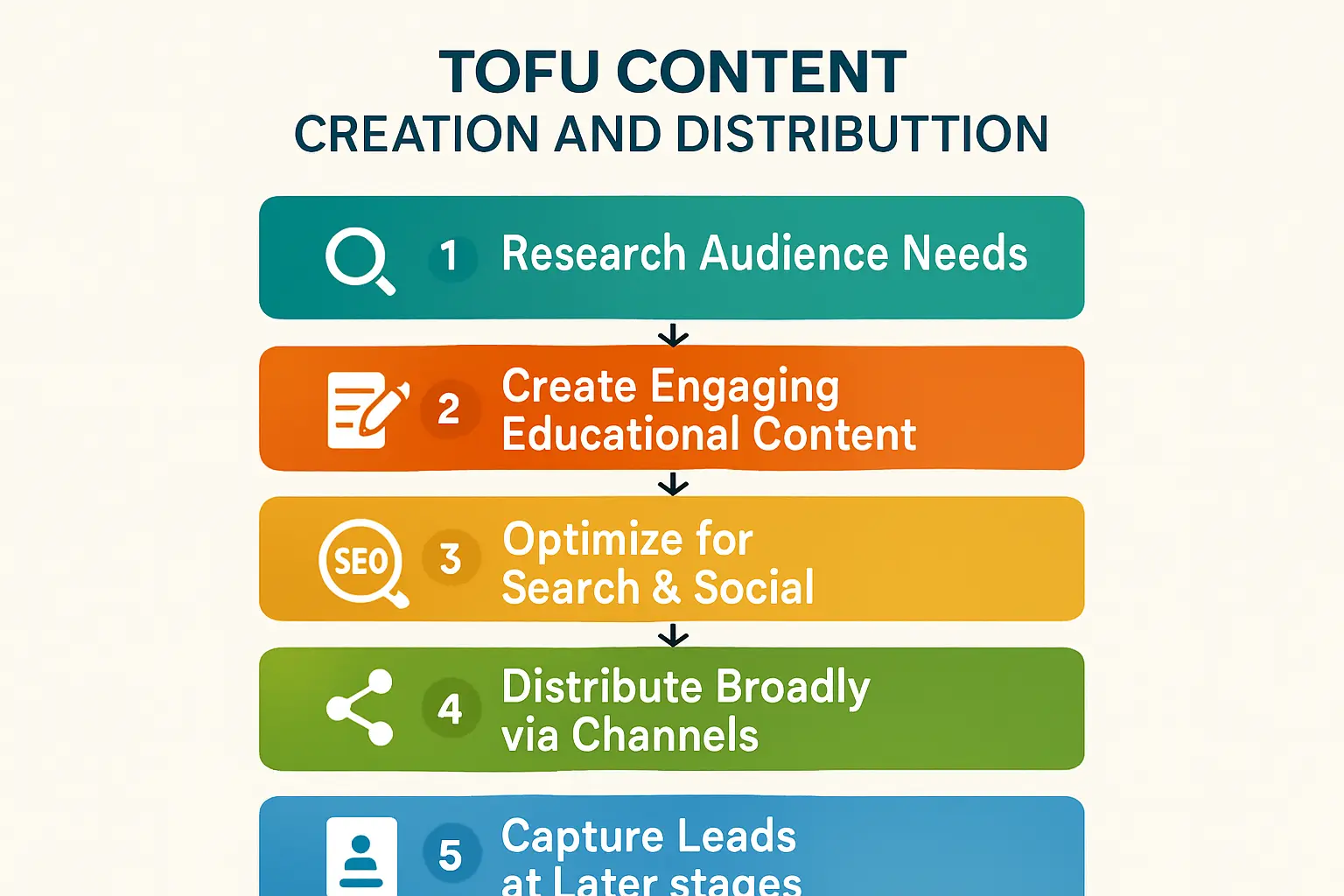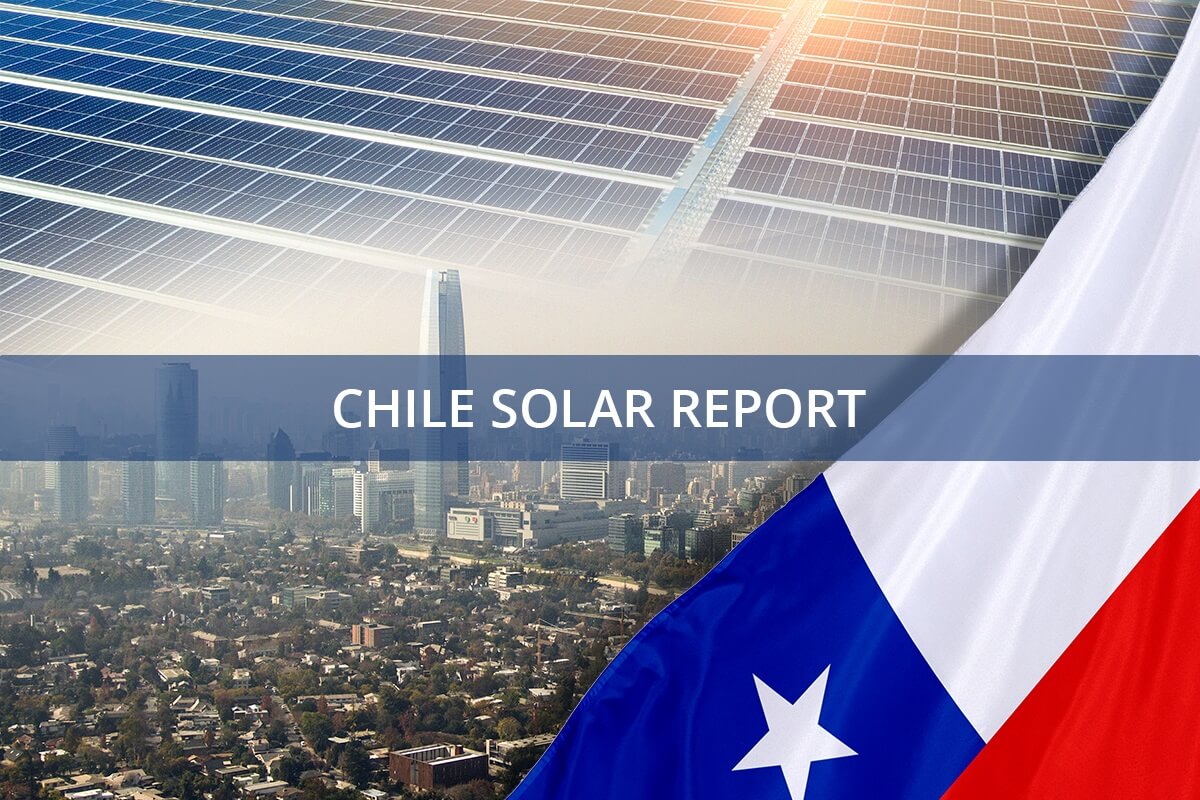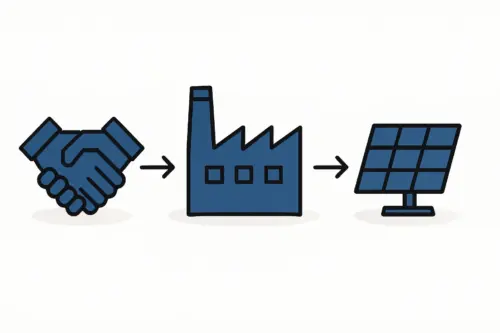Chile is home to one of the world’s most valuable solar resources, with the Atacama Desert receiving higher solar irradiation than almost anywhere on Earth.
Yet despite this natural advantage and an ambitious national goal of carbon neutrality by 2050, the country remains almost entirely dependent on imported solar modules. Over 99% of the panels powering its solar revolution are manufactured abroad, creating a significant gap between renewable energy potential and industrial sovereignty.

This reliance on complex global supply chains presents both a critical vulnerability and a strategic opportunity. For state-affiliated entities, national development agencies, and institutional investors, the imperative is not just to expand solar capacity, but to do so in a way that builds lasting national value. This article outlines a powerful framework to meet that challenge: the Public-Private Partnership (PPP) model for establishing a domestic solar module factory.
The Strategic Imperative for Domestic Solar Manufacturing in Chile
Building a sovereign solar manufacturing capability is more than an industrial project; it is a cornerstone of national energy security and economic development. Relying on imports exposes a country to geopolitical tensions, shipping disruptions, and price volatility—factors that can derail critical national infrastructure projects.
The case for local production is built on several key advantages:
-
Supply Chain Resilience: A domestic factory insulates national energy projects from external shocks, ensuring a stable supply of critical components.
-
Economic Development: Local manufacturing creates skilled jobs, fosters a domestic ecosystem of suppliers, and retains capital within the country, contributing directly to GDP.
-
Technology Transfer: Partnering with an experienced international firm enables the transfer of advanced manufacturing knowledge and processes, building a foundation for future innovation.
-
Reduced Logistics Costs: Manufacturing modules domestically significantly lowers transportation costs and reduces the carbon footprint associated with long-distance shipping.
Understanding the Public-Private Partnership (PPP) Model in this Context
A Public-Private Partnership is a collaborative venture between a government entity and a private-sector company, designed to deliver a project or service traditionally provided by the public sector. In the context of solar manufacturing, it is not simply a supply contract; it is a co-investment in creating a strategic national asset.
This model leverages the strengths of both partners:
The Public Sector’s Role
The government or state-affiliated body typically provides the strategic vision, regulatory support, and foundational assets. Its contributions can include land for the factory, streamlined permitting, tax incentives, or guaranteed initial offtake agreements for public energy projects. This involvement de-risks the investment and aligns the project with national priorities.
The Private Sector’s Role
The private partner brings the technical expertise, operational efficiency, and technology required to build and run a modern factory. This partner handles the design, equipment procurement, installation, staff training, and ongoing management of the facility, ensuring it meets international quality and performance standards.
This structure creates a synergy where public objectives are met through private-sector execution, ensuring both accountability and operational excellence.
A Phased Approach to Establishing a PPP Solar Factory
Launching a solar module factory is a significant undertaking, but a structured, phased approach makes it manageable. Based on experience from turnkey projects, a typical timeline from final agreement to the first module produced is 12 to 18 months.
Phase 1: Feasibility and Structuring
This initial phase lays the groundwork for the entire project. It involves comprehensive market analysis to define the target output (e.g., a 50 MW starter line), detailed financial modeling, and a thorough evaluation of technical requirements. A key part of this phase is understanding the complete investment requirements, which includes costs for machinery, infrastructure, and working capital. During this stage, the legal framework for the PPP is established, and the ideal private technical partner is selected based on their experience and technological capabilities.
Phase 2: Technical Implementation and Setup
With the plan in place, the focus shifts to execution. This phase is managed by the private technical partner and involves:
-
Factory Layout and Design: Optimizing the facility for efficient workflow and future expansion.
-
Equipment Procurement: Sourcing and acquiring all necessary machinery for a turnkey solar module production line.
-
Installation and Commissioning: Setting up the production line and ensuring all equipment operates to specification.
-
Initial Staff Recruitment: Hiring a core team of engineers and technicians.

Phase 3: Operations and Scaling
Once the factory is commissioned, full operations begin. This phase centers on training the local workforce to manage the production line effectively, implementing rigorous quality control systems, and securing necessary certifications (e.g., IEC 61215 and IEC 61730) to ensure the modules meet international standards. Production begins, ramps up to target capacity, and a roadmap for future scaling is developed.
Financing Mechanisms for a Solar Manufacturing PPP
A key advantage of the PPP model is its ability to unlock diverse sources of capital through ‘blended finance’. By combining public and private funds, the project’s financial risk profile becomes more attractive to commercial lenders and investors.
Common financing components include:
-
Public Sector Contribution: This can come from national development banks, sovereign wealth funds, or direct government grants aimed at fostering strategic industries.
-
Private Equity: The private technical partner often contributes equity, demonstrating a long-term commitment to the project’s success.
-
Debt Financing: With government backing or offtake guarantees in place, securing loans from commercial banks or international financial institutions becomes far more feasible.
This blended approach ensures the project is well-capitalized while distributing financial risk between the partners.
Navigating the Regulatory Landscape in Chile
The PPP structure is particularly effective at navigating Chile’s unique regulatory complexities. The public partner can take the lead in securing environmental permits, land use rights, and other necessary approvals, streamlining a process that can often be a major hurdle for purely private ventures.
The government can also create favorable conditions through policies that incentivize local manufacturing, such as offering preferential treatment in public tenders for locally produced solar modules. This helps create a stable, predictable domestic market for the factory’s output in its initial years.
Frequently Asked Questions (FAQ)
What is a realistic timeline for a PPP solar factory project?
From signing the partnership agreement to the first module coming off the production line, a realistic timeframe is 12 to 18 months. This includes factory setup, machine commissioning, and initial staff training.
How many employees are needed for a start-up factory?
A semi-automated production line with an annual capacity of 20–50 MW typically requires a workforce of 25 to 40 employees. This includes production line operators, technicians, quality control personnel, and a small administrative team.
What are the main risks, and how does a PPP mitigate them?
The primary risks are market demand, technical execution, and financing. The PPP model addresses these directly:
-
Market Risk: The public partner can guarantee initial demand through offtake agreements for state projects.
-
Technical Risk: An experienced private partner ensures the factory is built to international standards and operated efficiently.
-
Financial Risk: Blended finance and public-sector guarantees make the project more attractive to investors and lenders.
Can a factory in Chile compete with large-scale Asian manufacturers?
The objective is not to compete on the global commodity market but to build strategic value for domestic and regional markets. A Chilean factory competes on different terms: supply chain security, elimination of international shipping costs, faster delivery times for local projects, and the ability to customize products for specific regional conditions (e.g., modules optimized for high-UV environments).
The Path Forward
For Chile, establishing a domestic solar module manufacturing capability through a Public-Private Partnership is a logical and strategic step toward achieving energy independence and fostering industrial development. This model provides a robust framework for combining public vision with private-sector expertise to build a valuable national asset.

For public-sector leaders and institutional investors considering this path, the key is to begin with a clear and structured planning process. Understanding the technical, financial, and operational variables is the first step toward turning this strategic opportunity into a tangible asset. To deepen your understanding and learn a structured approach to planning your solar factory, explore our educational resources designed for business professionals and decision-makers in the solar industry.






